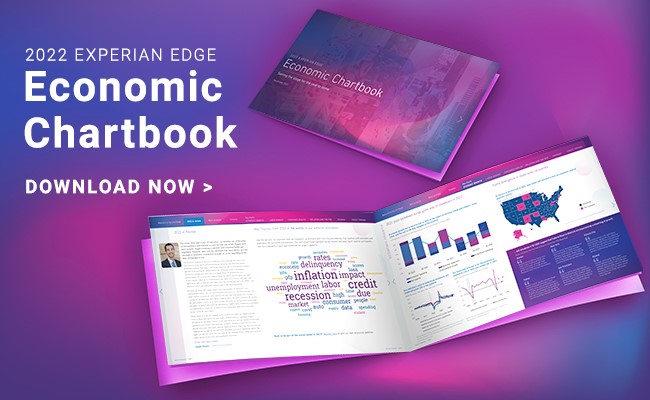We are squarely in the holiday shopping season. From the flurry of promotional emails to the endless shopping lists, there are many to-dos and even more opportunities for financial institutions at this time of year.
The holiday shopping season is not just a peak period for consumer spending; it’s also a critical time for financial institutions to strategize, innovate, and drive value. According to the National Retail Federation, U.S. holiday retail sales are projected to approach $1 trillion in 2024, , and with an ever-evolving consumer behavior landscape, financial institutions need actionable strategies to stand out, secure loyalty, and drive growth during this period of heightened spending.
Download our playbook: "How to prepare for the Holiday Shopping Season"
Here’s how financial institutions can capitalize on the holiday shopping season, including key insights, actionable strategies, and data-backed trends.
1. Understand the holiday shopping landscape
Key stats to consider:
U.S. consumers spent $210 billion online during the 2022 holiday season, according to Adobe Analytics, marking a 3.5% increase from 2021.
Experian data reveals that 31% of all holiday purchases in 2022 occurred in October, highlighting the extended shopping season.
Cyber Week accounted for just 8% of total holiday spending, according to Experian’s Holiday Spending Trends and Insights Report, emphasizing the importance of a broad, season-long strategy.
What this means for financial institutions:
Timing is crucial. Your campaigns are already underway if you get an early start, and it’s critical to sustain them through December.
Focus beyond Cyber Week. Develop long-term engagement strategies to capture spending throughout the season.
2. Leverage Gen Z’s growing spending power
With an estimated $360 billion in disposable income, according to Bloomberg, Gen Z is a powerful force in the holiday market. This generation values personalized, seamless experiences and is highly active online.
Strategies to capture Gen Z:
Offer digital-first solutions that enhance the holiday shopping journey, such as interactive portals or AI-powered customer support.
Provide loyalty incentives tailored to this demographic, like cash-back rewards or exclusive access to services.
Learn more about Gen Z in our State of Gen Z Report.
To learn more about all generations' projected consumer spending, read new insights from Experian here, including 45% of Gen X and 52% of Boomers expect their spending to remain consistent with last year.
3. Optimize pre-holiday strategies
Portfolio Review:
Assess consumer behavior trends and adjust risk models to align with changing economic conditions.
Identify opportunities to engage dormant accounts or offer tailored credit lines to existing customers.
Actionable tactics:
Expand offerings. Position your products and services with promotional campaigns targeting high-value segments.
Personalize experiences. Use advanced analytics to segment clients and craft offers that resonate with their holiday needs or anticipate their possible post-holiday needs.
4. Ensure top-of-mind awareness
During the holiday shopping season, competition to be the “top of wallet” is fierce. Experian’s data shows that 58% of high spenders shop evenly across the season, while 31% of average spenders do most of their shopping in December.
Strategies for success:
Early engagement: Launch educational campaigns to empower credit education and identity protection during this period of increased transactions.
Loyalty programs: Offer incentives, such as discounts or rewards, that encourage repeat engagement during the season.
Omnichannel presence: Utilize digital, email, and event marketing to maintain visibility across platforms.
5. Combat fraud with multi-layered strategies
The holiday shopping season sees an increase in fraud, with card testing being the number one attack vector in the U.S. according to Experian’s 2024 Identity and Fraud Study. Fraudulent activity such as identity theft and synthetic IDs can also escalate.
Fight tomorrow’s fraud today:
Identity verification: Use advanced fraud detection tools, like Experian’s Ascend Fraud Sandbox, to validate accounts in real-time.
Monitor dormant accounts: Watch these accounts with caution and assess for potential fraud risk.
Strengthen cybersecurity: Implement multi-layered strategies, including behavioral analytics and artificial intelligence (AI), to reduce vulnerabilities.
6. Post-holiday follow-up: retain and manage risk
Once the holiday rush is over, the focus shifts to managing potential payment stress and fostering long-term relationships.
Post-holiday strategies:
Debt monitoring: Keep an eye on debt-to-income and debt-to-limit ratios to identify clients at risk of defaulting.
Customer support: Offer tailored assistance programs for clients showing signs of financial stress, preserving goodwill and loyalty.
Fraud checks: Watch for first-party fraud and unusual return patterns, which can spike in January.
7. Anticipate consumer trends in the New Year
The aftermath of the holidays often reveals deeper insights into consumer health:
Rising credit balances: January often sees an uptick in outstanding balances, highlighting the need for proactive credit management.
Shifts in spending behavior: According to McKinsey, consumers are increasingly cautious post-holiday, favoring savings and value-based spending.
What this means for financial institutions:
Align with clients’ needs for financial flexibility.
The holiday shopping season is a time that demands precise planning and execution. Financial institutions can maximize their impact during this critical period by starting early, leveraging advanced analytics, and maintaining a strong focus on fraud prevention.
And remember, success in the holiday season extends beyond December. Building strong relationships and managing risk ensures a smooth transition into the new year, setting the stage for continued growth.
Ready to optimize your strategy? Contact us for tailored recommendations during the holiday season and beyond.
Download the Holiday Shopping Season Playbook




